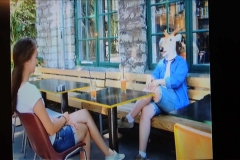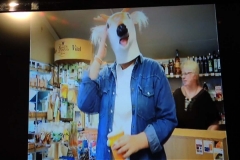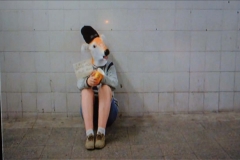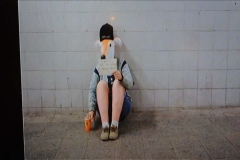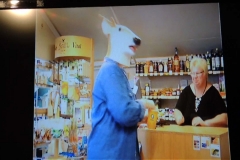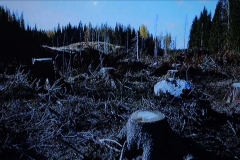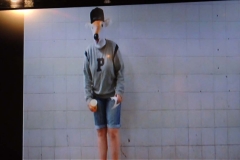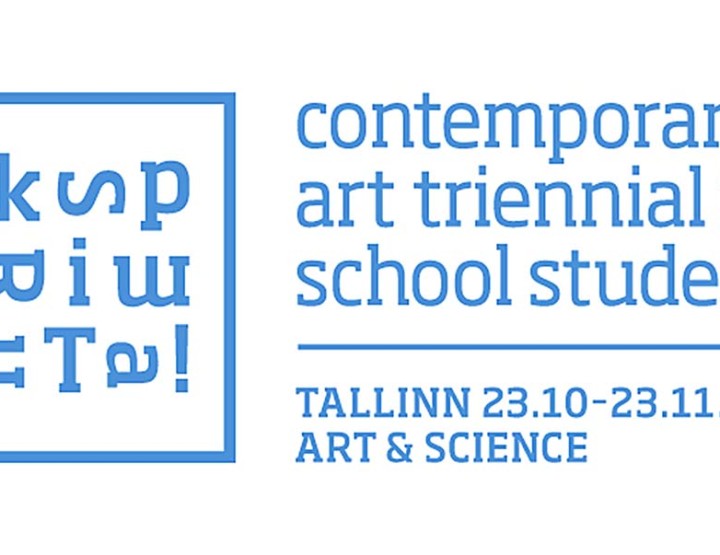“We wanted to give young people a chance to speak about what matters to them.” Annely Kőster, the director of Experimenta!1
The contemporary art triennial for students Experimenta! was designed in 2011, when Tallinn was the European Capital of Culture. Today, it is one of the most noted European events intended for the presentation of artwork by students aged 14 to 19, and it is undoubtedly the one most devoted to contemporary art practices. Experimenta! unites young artists from different countries with curators and art educators, different types of general and art schools, educational and art institutions, etc. Experimenta! is designed as an open, sustainable platform for the interchange of ideas and best practice in the fields of contemporary art and art education2. The second Experimenta! on the topic of Art & Science, which took place in October and November 2014, provided a platform for deliberations on the role of contemporary art in art education, on the relationship between the educational and the artistic in students’ artwork, on differences between students’ art and the art of adult artists, on relations between science and art, etc.
Experimenta! and contemporary art
Deputy Mayor of Tallinn Mihhail Kõlvart admitted after visiting the exhibition that he had been hoping to experience aesthetic enjoyment, as art is supposed to be beautiful, but his hope was in vain… Instead, he got something much more important.3
Experimenta! does not provide a dichotomous platform, where pros and cons of using contemporary art in art education are discussed. Installation art, video art, computer art, interactivity, critical discourse, social relations, conceptual art, interculturalism, sustainability, juxtaposing etc are terms that in one way or another describe all of the artwork at Experimenta!. Experimenta! is not just another place for exhibiting students’ artwork but also has an important educational role. It does not reflect the current situation in art education but actively intervenes and develops it.
Contemporary art education theories have emphasised the importance of contemporary art in art education since the 1990s. The main task of the post-modern art curriculum is to train students to widen and deepen their understanding of the cultural landscape they inhabit4.
Contemporary art practices are important in the educational sense, as they reflect the current status of culture and are thus close to the comprehension of youth. Contemporary artists and young students breathe the same air and live the same oversaturated and digitalised lives.
Art education practices in schools unfortunately lag behind. Updated national art curricula (especially in countries that changed their political systems when the Iron Curtain fell in 1991) extensively mention contemporary art, but it takes longer for changes to be implemented in practice. The conventional school environment is rather rigid and reacts slowly to changes. Art educators who are dedicated to contemporary art practices are still in the minority and are breaking new ground. With its dedication to contemporary art practices, Experimenta is more advanced than many school art education practices and even presents a type of avant-garde approach.
Educational – artistic
Experimenta! faces another challenge with its focus on teenager art. The artistic expression of 14- to 19-year-old students is complicated by the fact that during secondary school they are the main subjects of the educational process but also young people with rather unique views of the world. If we agree with Joseph Beuys5 that everyone who sees the problems of the world and feels the desire to express them, regardless of their formally attained knowledge and education, is an artist, then Experimenta! is also an artistic and not just an educational exhibition. At the secondary school level, art education mostly emphasises the educational part of the process rather than the artistic. Educational work is directed towards the individual student and the result of the educational process is the development of the individual and not artwork6.
Works that were exhibited at Experimenta! may be the result of educational processes, but many of them also came to life as independent autonomous artworks. This is due to the fact that many of them have emerged as projects outside of regular school work, in art workshops, art schools (e.g the Vantaa Art School for Children and Young People) and other institutions (e.g International Munich Art Lab) or in cooperation with professional artists (e.g in Latvia, Slovenia etc). Speaking of works of art made by teenagers as artwork is considered almost blasphemous in the educational environment, but standing in Experimenta!’s exhibition space, it becomes quite natural. Works exhibited at Experimenta! are art even if they are the result of the educational process. As such, they offer the ideal field for deliberations on the relationship between these works and artwork created by adult professional artists. Here, Experimenta! again achieves what it set out to do, i.e bringing art and art education closer to each other. When things are brought closer together, they become easier to compare and to contrast. Let us try. Unlike adult art, teenager art:
(a) deals with different topics. The world of teenagers is plagued by different problems than those of the adult world. Identity and values are being shaped. Teenagers fall in love for the first time and search for soul mates. Who is with whom and who will be with whom is very important. In Līga Holodņikova’s (from Latvia) True Love interactive installation, the light shines only once the viewer brings the right people together. Interpersonal relationships are joined by the topics of environmental protection, equality, loneliness, consumerism, virtual reality (a Canadian series of digitalised multimedia images) and body obsession (Karola Kaugema, Estonia: Competition).
(b) approaches its topics playfully and awkwardly. This is evident when mentors are aware of their role and do not excessively intervene in the process when the idea is being developed and the presentation prepared. This is clearly evident in the Estonian video prepared by Stina-Maria Lusti, Lota Marie Aaliste, Elo Vahtrik and Merili Kärk called Adaptation, where one of the authors is walking through the town wearing an elk mask and trying to find her place in the sun, and it is also evident in the entire Latvian presentation.
(c) has a simpler technical implementation but is thus often more expressive7. A video (Dunya Aydos, Turkey: Lasting Tracks) unintentionally shows the hands throwing coloured balls into a funnel, which does not diminish the expressive power of the artwork, nor does it affect the maturity of the idea or the imaginative symbolism (the funnel as a black hole in the universe).
The Experimenta! platform requires more space and time to cover all the issues that it deals with. We are convinced that this will end up being only one of many texts. There is time for reflection, as we look forward to the next Experimenta! in three years.
1 http://www.eksperimenta.net/post/7419/
2 http://www.eksperimenta.net/about-e/
3 http://www.eksperimenta.net/post/7419/
4 Efland, A. (1992). Curriculum Problems at Century’s End: Art Education and Postmodernism. In: Piironen, L. (Ed). Power of Images – A Selection of Papers presented at the European Regional Congress of INSEA in Helsinki 9–13 August 1992 and at the INSEA Research Conference in Tampere 6–8 August 1992. Helsinki: INSEA Finland, The Association of Art Teachers in Finland. Pp 114–120.
5 Schneede, Uwe M. (1994). Joseph Beuys – Die Aktionen. Ostfildern-Ruit. Verlag Gerd Hatje.
6 At IDEAlaboratory, at the conference within the framework of Experimenta!, Heie Treier similarly justified the difference between teachers’ orientation and that of curators.
7 A similar aspect was emphasised by James Elkins in regard to video, using the example of Leva Dzelde Miekalne’s (Latvia) Moment of Thought. http://www.eksperimenta.net/cat/newsletter/november2014/


